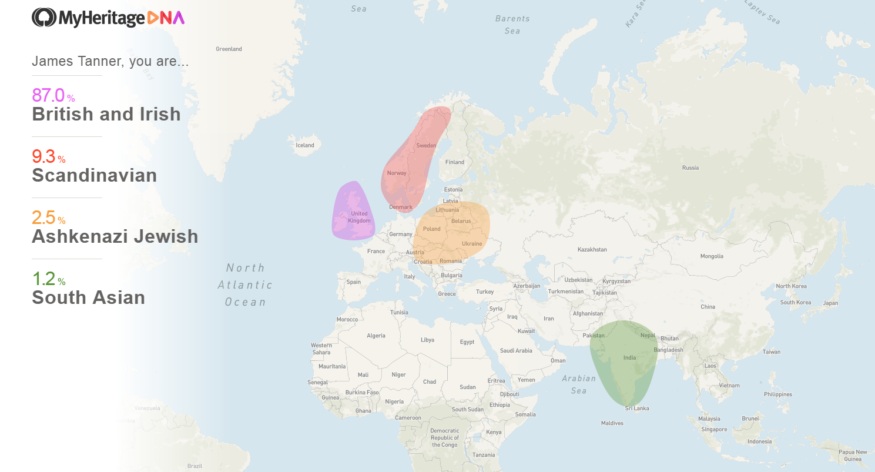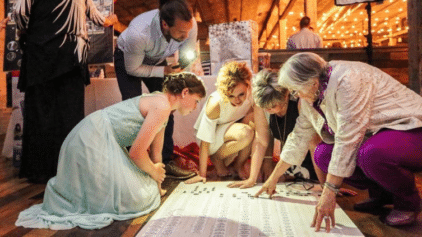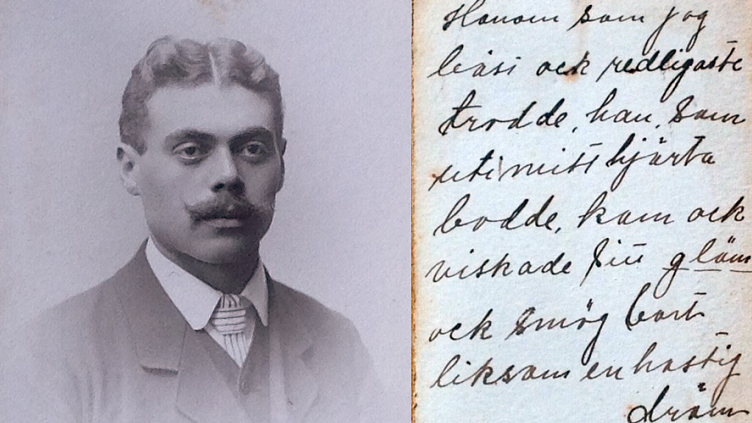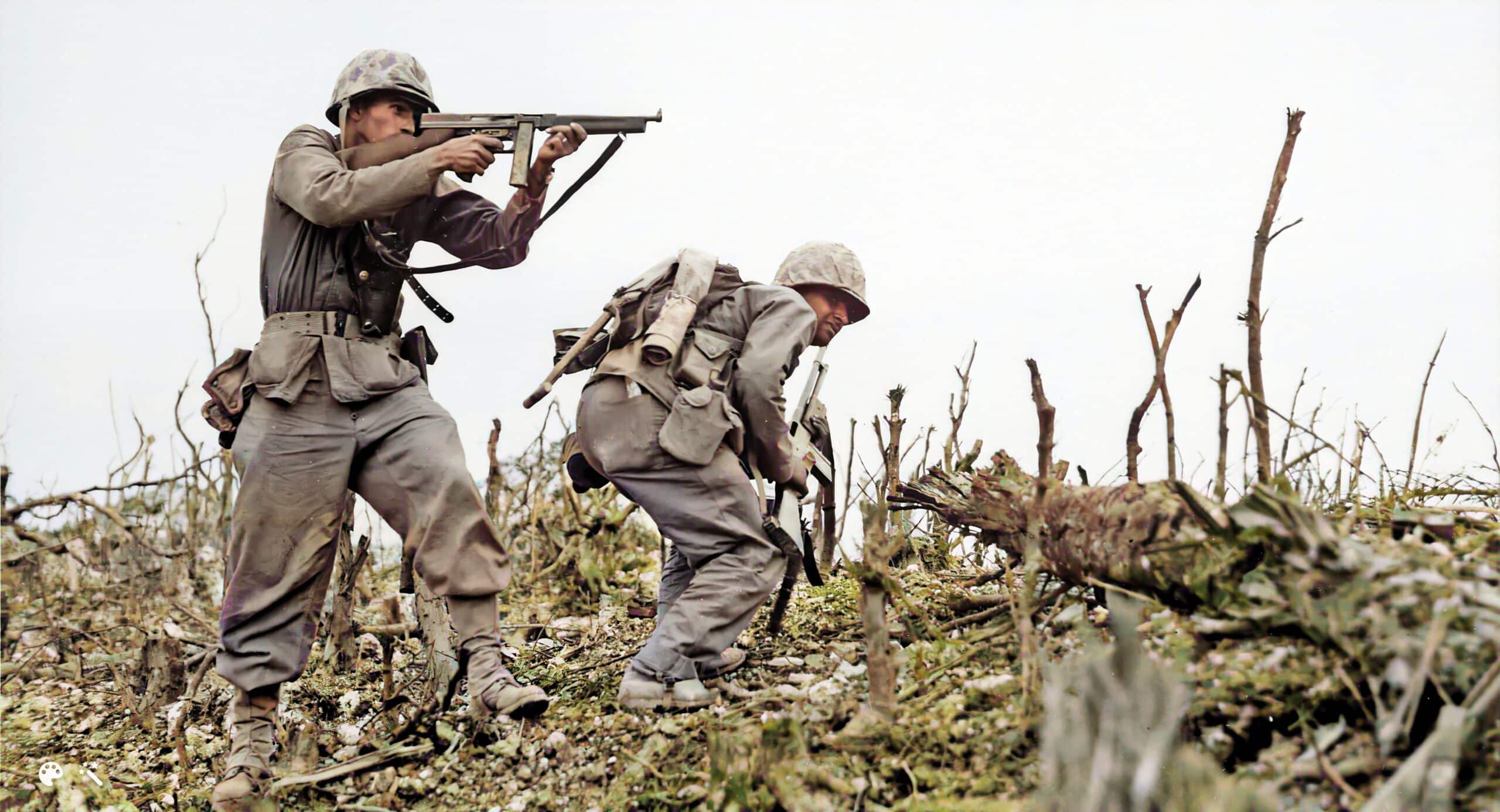

 This is a guest post by genealogist James L. Tanner, a retired trial attorney from Arizona now living in Utah. He is the author of two popular genealogy blogs, Genealogy’s Star and Rejoice, and be exceeding glad. With over 30 years of genealogy experience, he currently volunteers at the Brigham Young University Family History Library in Provo, Utah. In this post, James reports on his experiences with our DNA Matches and Ethnicity Report.
This is a guest post by genealogist James L. Tanner, a retired trial attorney from Arizona now living in Utah. He is the author of two popular genealogy blogs, Genealogy’s Star and Rejoice, and be exceeding glad. With over 30 years of genealogy experience, he currently volunteers at the Brigham Young University Family History Library in Provo, Utah. In this post, James reports on his experiences with our DNA Matches and Ethnicity Report.
Over the past year or so, I have had a number of friends and acquaintances who have had some interesting results from taking genealogical DNA tests. One friend found her birth mother and another friend learned that her grandfather was not her biological ancestor. Many friends have found new relatives and others have resolved difficult genealogical relationship issues.
As a result of these experiences and others, I decided to take a DNA test. I chose MyHeritage.com because of its extensive user base and the advanced technology of its Smart Match and Record Match technologies. I realized that these same successful technologies could be used to find DNA matches from among other members and the potential number of people involved is huge. DNA testing is more successful with a large pool of potential ancestral connections. DNA testing to determine genealogical relationships is just in its beginning stages and MyHeritage.com implemented its own DNA testing program only last year.
When my MyHeritageDNA test arrived, I was pleasantly surprised at how simple conducting the test turned out. Once I returned the completed test, I was informed of each part of the step-by-step process. First, MyHeritage technicians inspected my sample and made sure it was intact. Next, DNA was extracted from my cells in the vial and amplified. In other words, they make copies of the DNA in order to make sure they have enough of it to analyze. My DNA was placed on a custom-made DNA genotyping chip and heated to a high temperature so the DNA could attach itself to the chip (hybridization).
Once those steps were complete, a computer read the hybridized chip, producing the DNA data. Following this, the DNA data went through a rigorous review to ensure it met MyHeritage’s high-quality standards. The DNA data is then uploaded to the MyHeritage website, where it is analyzed and matched, and the results were sent to me.
Because I had done a lot of research on my family over the years, the results of the test did not surprise me. In fact, the DNA test results confirmed some of my own theories about the identity of some ancestors. In one case, I have a great-grandfather whose name is Charles Godfrey DeFriez. My research had shown that the “DeFriez” surname was of Jewish origin, but other than the general idea that the family was Jewish, I had no sources indicating that. The DNA test, however, showed that I had a 2.5% Ashkenazi Jewish connection, thus validating the assumption that the surname indicated a Jewish heritage.
The connection to South Asia was a little more problematic, but there is a partially supported theory that one of my ancestral lines may have been Romani (Gypsy) so that would explain the existence of that DNA segment of my test. The Romani have long been held to have a Southern Asian or Indian origin. See “Origin of the Romani People Pinned Down.”
So, the main and immediate benefit of the MyHeritage DNA test was to clarify and partially substantiate some loose ends in our family research. We are still looking for another, perhaps better documented, connection to South Asia, but the Jewish connection is very well documented with the addition of the DNA test.
Since I received the results of my DNA test, I have received a constant stream of DNA matches from among MyHeritage’s vast membership. These matches are because I have my family tree on MyHeritage. My next step is to begin to analyze the match results to see if there are any surprises. Since the matches sent by MyHeritage include surnames in common between my family tree and those with DNA matches, I can quickly decide if there are any particular questions that I might want to answer by contacting those people who match.
I can see that a DNA test may be simply a matter of curiosity, but for a diligent genealogist with a family tree on MyHeritage, a DNA test may solve some mysteries or at least add support to well-developed theories. On the other hand, a DNA test taken for curiosity may provide strong motivation to pursue some serious genealogical research.









